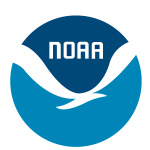- 産業: Government
- Number of terms: 30456
- Number of blossaries: 0
- Company Profile:
NOAA Coral Reef Conservation Program, National Oceanic and Atmospheric Administration, U.S. Department of Commerce
A disk-like structure used by some fishes to attach itself to rocks or vegetation.
Industry:Natural environment
A pigment that absorbs light at one wavelength and emits it at a different wavelength. The emitted light usually has a lower energy than the light absorbed by the pigment.
Industry:Natural environment
A soft coral in the order Pennatulacea and subclass Alcyonaria. Sea pens are colonial octocorals which exhibits polyp dimorphism. One polyp grows very large, loses its tentacles and forms a central axis. The base of this primary polyp forms a bulb which may be expanded or contracted. The bulb is used to anchor the colony. Branching off this primary polyp are various secondary polyps. Some, called autozooids, are typical feeding polyps. Others, called siphonozooids, serve as intakes for water, which circulates within the colony and helps keep it upright. Calcareous spicules and frequently a central axial rod of calcium carbonate also provide support. One group of sea pens have secondary polyps grouped into "polyp leaves," giving these species a feather-like appearance, from which we get the common name as they look something like old-fashioned quill pens. Most species, however, do not have polyp leaves, and look more like clubs, umbrellas, or pinwheels.
Industry:Natural environment
A type of dentition where the teeth are continuously replaced.
Industry:Natural environment
An epithelium consisting of one or more cell layers, the most superficial of which is composed of flat, scalelike or platelike cells.
Industry:Natural environment
Any species of marine bony fishes belonging to the families Tetraodontidae (puffers, blowfishes), or Diodontidae (burrfishes, porcupinefishes, spiny puffers). These fishes are able to inflate their bodies with water or air to form a globe as a protection against predation. The flesh and organs of some blowfishes contain an extremely potent toxin which can be fatal to humans when ingested.
Industry:Natural environment
In taxonomy, a brief description of the main characters of a taxon.
Industry:Natural environment
